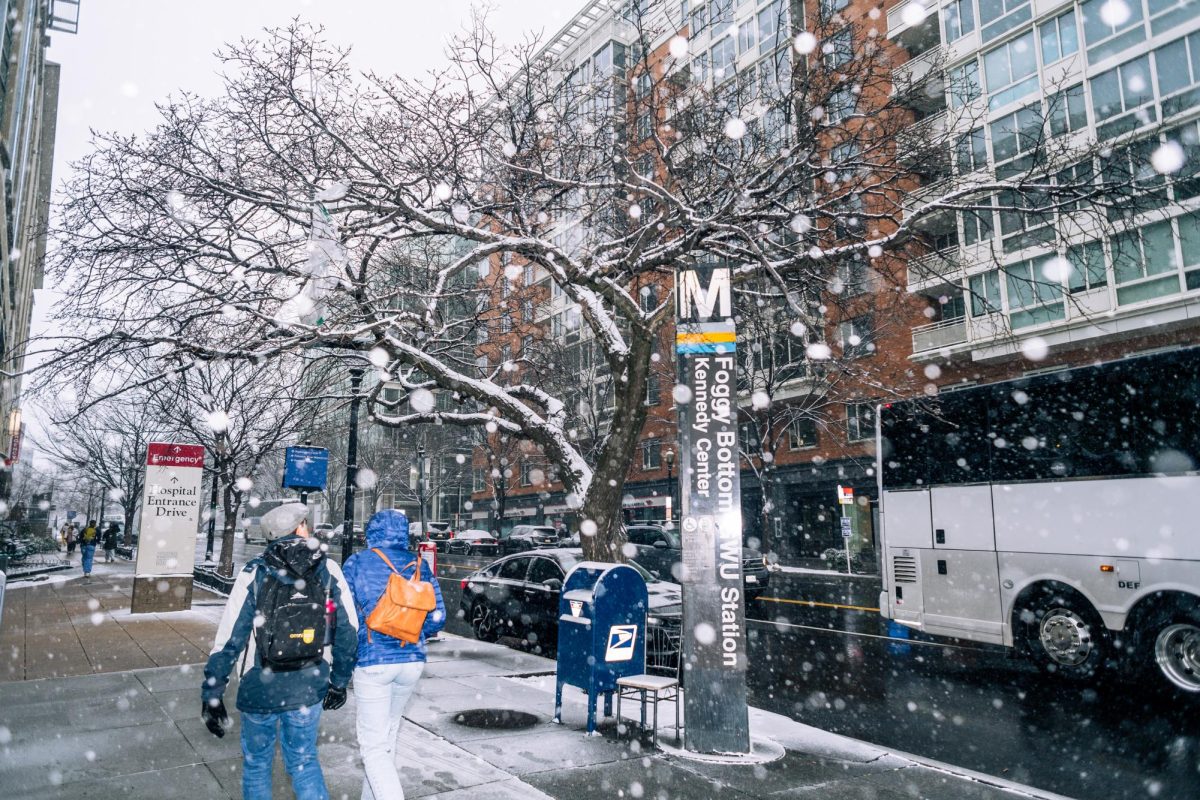Few buildings on campus carry a more infamous name than Thurston Hall. Until recently, prospective students could experience their first taste of the 1,100-student, freshman dorm as part of GW’s STAR Tour Program, but frequent problems encountered in touring the residence hall have led to its elimination as a tour stop.
Kathryn Napper, dean of undergraduate admission, has worked in the admissions office for 30 years and said Thurston has been the most widely shown dorm on tours over the years. Instead of Thurston, the STAR Tour program now shows prospective GW freshmen a mock room in Potomac House, a dorm that currently houses sophomores.
“Thurston was initially used because it housed a greater percentage of the undergraduates; however, as the size of the student body has increased and the number of housing options increased, other residence halls became viable options,” Napper wrote in an e-mail.
Before the switch to Potomac House, tour guides brought tour groups to Thurston’s first or second floors and searched for a room with an open door to display for the visitors. Guides were not allowed to knock on a closed door and it was often difficult to find residents willing to host a tour group.
“This fall we were presented with an opportunity to have access to a room in Potomac House that provided greater ease to our visitors in seeing a room and interfered less with the residents of the building,” Napper said.
The idea of using a mock dorm rather than a uninhabited student dorm is one used by many other universities, including New York University.
American shows mock rooms over the summer but the tour guide shows his or her room assignment for the semester. This format is possible because five of AU’s seven residence halls are virtually identical, and none are exclusively freshman buildings, said a tour program representative for AU.
Drew Rifkin, student coordinator for the STAR program, said he is unfazed by the fact that Potomac House is being shown to incoming freshmen even though it is no longer a freshman dorm.
“We’re just trying to represent a typical GW room and show what amenities it includes,” Rifkin said. “I think it gives prospective students a good idea of where they may be living and gives them a feel that it’s a nice place to live.”
The move to Potomac has not come without concerns. Former tour guide Melinda Pearl said she fears showing a sophomore dorm may be misleading. “I understand why the change occurred but it’s not a good idea,” she said. “It’s not realistic.”
Pearl suggested that holding the tours later in the day might eliminate the inconvenience of searching for an open door, and the sight of prohibited items STAR tour guides encountered frequently in Thurston rooms.
“There are a lot of problems with showing Thurston, especially on Saturday mornings,” Pearl said. “I would walk by a room and there would be beer and wine bottles all over the place, or there would be people passed out in the hallway.”
While some tour guests reacted to this sight with laughter, others would be, according to Pearl, “flabbergasted” or “shell-shocked.”
While giving tours of Thurston, this occurrence was common among STAR guides.
“When showing Thurston we walked into rooms with alcohol, hookahs and smoking paraphernalia,” said Lindsay Toner, a STAR tour guide. “It’s uncomfortable to bring parents into those rooms.”
Uncomfortable or not, the evidence supporting Thurston’s reputation for being a central party locale was all too often in plain sight.
“One room had heaters covered in green beer bottles. When the sunlight came through the windows, it went through the bottles and created a green glow that you could see in the hallway,” Toner said. “It really put a damper on the rest of the tour. Parents think after seeing Thurston that there’s no control.”
Toner said the switch to Potomac will eliminate these problems and improve the quality of the tours.
“We couldn’t be confident showing Thurston,” Toner said. “Showing Potomac will protect the integrity of the University.”
While Rifkin recognizes that such encounters have occurred, he cites convenience as the sole reason for this change.
“Have those things happened? Absolutely,” he said, “But that was not a factor in the decision to make the change.”






